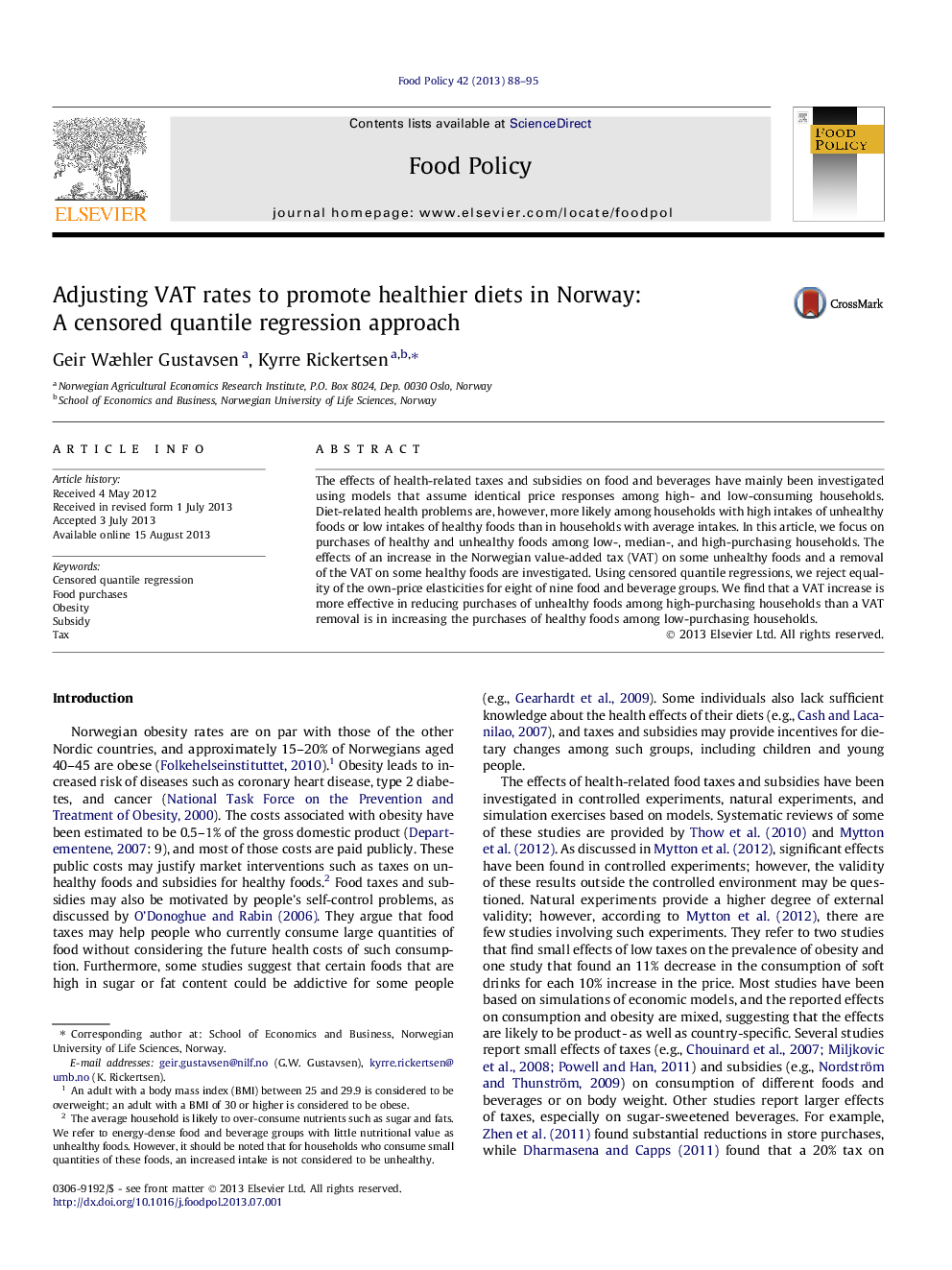| Article ID | Journal | Published Year | Pages | File Type |
|---|---|---|---|---|
| 5070424 | Food Policy | 2013 | 8 Pages |
Abstract
The effects of health-related taxes and subsidies on food and beverages have mainly been investigated using models that assume identical price responses among high- and low-consuming households. Diet-related health problems are, however, more likely among households with high intakes of unhealthy foods or low intakes of healthy foods than in households with average intakes. In this article, we focus on purchases of healthy and unhealthy foods among low-, median-, and high-purchasing households. The effects of an increase in the Norwegian value-added tax (VAT) on some unhealthy foods and a removal of the VAT on some healthy foods are investigated. Using censored quantile regressions, we reject equality of the own-price elasticities for eight of nine food and beverage groups. We find that a VAT increase is more effective in reducing purchases of unhealthy foods among high-purchasing households than a VAT removal is in increasing the purchases of healthy foods among low-purchasing households.
Related Topics
Life Sciences
Agricultural and Biological Sciences
Food Science
Authors
Geir Wæhler Gustavsen, Kyrre Rickertsen,
